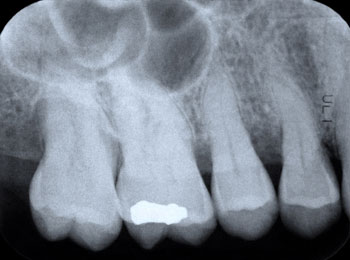Learning in the Partners In Dental Care Lobby
Back Forward
So, What Exactly is Gum Disease?
Gum disease occurs when germs destroy gums and bone around the teeth. It starts with plaque, and the goal of daily brushing and flossing is to remove this sticky substance before it becomes an issue. If plaque is not removed, it becomes tartar, which can only be removed by a hygienist or dentist. Plaque and tartar buildup lead to gingivitis and then the more severe form of gum disease, periodontitis.
Learning in the Partners In Dental Care Lobby
Back Forward
What are the Symptoms?
Gum disease can be painless. A person may not know he/she has gum disease until there is serious damage. Warning signs include:
- Gums that bleed during brushing and flossing
- Red, swollen or tender gums
- Gums that have pulled away from teeth
- Bad breath
- Pus between teeth and gums
- Permanent teeth that are loose or moving
- Bite changes
- Partial dentures or bridges fit differently
Learning in the Partners In Dental Care Lobby
Back Forward
Who is Most at Risk?
Gum disease can start at any age. More than 75% of American adults have some form of gum disease. Poor oral hygiene, sugar and acid exposure, ill-fitting restorations, female hormones, smoking, wisdom teeth and abnormal tooth structures all increase risk for gum disease.
Diabetics, including children and teens, are especially at risk because they are generally more susceptible to bacterial infection and have a decreased ability to fight bacteria that invade the gums.
Learning in the Partners In Dental Care Lobby
Back Forward
Preventing Dental Issues Associated with Diabetes
Controlling blood glucose levels is a must. Maintaining good oral health will help with controlling blood sugar and relieving dry mouth. Regular dentist visits (2x per year) and daily brushing and flossing are the best weapon for maintaining good oral health.
Learning in the Partners In Dental Care Lobby
Back Forward
The Important Facts
- Gum Disease starts with plaque, and the goal of daily brushing and flossing is to remove this substance.
- Symptoms include red, swollen or tender gums, gums that bleed during brushing, bad breath, pus, loose teeth and bite changes.
- Diabetics, including children are especially at risk.
- Serious gum disease may affect blood sugar control and contribute to the progression of diabetes.
- Controlling blood glucose is a must, and maintaining good oral health/visiting your dentist twice a year will help avoid dental issues associated with diabetes.
- For more information about oral health and diabetes, please ask your dentist today.



